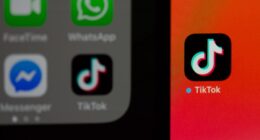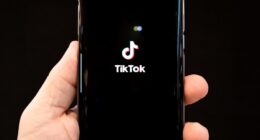Artists, bands, & other music-related entities work together to promote each other and increase their fan bases through a tactic known as cross-promotion. Using this strategy, artists, brands, & platforms collaborate to promote each other’s music and content on a variety of platforms, such as social media, concerts, tours, & music streaming services. The main goal is to establish partnerships that benefit all parties involved and boost exposure & audience growth. Cross-promotion has the major benefit of reaching new audiences that traditional marketing techniques might not be able to. Through joint ventures with other musicians or brands, musicians can leverage their partners’ already-existing fan bases and draw in new listeners who might be interested in their music. Also, by linking an artist with reputable and well-established organizations, cross-promotion can raise an artist’s profile in the industry and open doors for more partnerships, sponsorships, and commercial ventures.
Key Takeaways
- Cross-promotion in the music industry involves promoting one artist or band through the channels of another artist or band.
- Social media is a powerful tool for cross-promotion, allowing artists to reach new audiences and engage with fans.
- Collaborating with other artists and bands can lead to cross-promotion opportunities, such as joint performances and shared marketing efforts.
- Partnering with brands and sponsors can provide resources and exposure for cross-promotion, as well as potential financial support.
- Music streaming platforms offer opportunities for cross-promotion through curated playlists, collaborations, and featured artist promotions.
- Coordinated events and tours with other artists can expand reach and create cross-promotion opportunities for all involved.
- Success of cross-promotion campaigns can be measured through metrics such as increased social media engagement, streaming numbers, and ticket sales.
By using this tactic, artists can reach audiences through a variety of channels and broaden their marketing initiatives. Musicians can create a holistic marketing strategy that engages fans at various points in their journey by leveraging a variety of platforms, including social media, events, and streaming services. With more fans who are likely to support the artist’s upcoming releases and endeavors, this multifaceted approach can boost brand awareness, engagement, and fan loyalty.
Collaborative Production of Material. Working together to create content is one efficient way to use social media for cross-promotion. Together, artists can produce collaborative music videos, behind-the-scenes movies, or even live performances that are posted on the social media accounts of both sides.
This gives both artists a chance to interact with the fan bases of the other, which in turn excites fans who are excited to see their idols collaborate. Influencer partnerships that are strategically oriented. Establishing strategic alliances with influencers and content producers is another way to use social media for cross-promotion. Artists can reach out to new audiences and prospective fans they might not have otherwise encountered by collaborating with well-known social media influencers with a large following.
Sponsored posts, takeovers, and other cooperative content that promotes the artist’s music and brand to a larger audience can be used to accomplish this. Speak with New Audiences. Through the use of social media for cross-promotion, musicians can increase the size of their fan base and connect with audiences across the globe. Social media presents a special chance for musicians to interact with fans and market their music globally, whether via joint content production or strategic alliances with influencers.
One of the most effective ways to cross-promote music in the industry is through collaborating with other musicians. Artists can combine their skills and fan bases with other like-minded musicians to produce engaging content that appeals to a larger audience. Collaborative music releases, in-person appearances, or even extensive tours that introduce each artist to new audiences can accomplish this. Having featured vocals on each other’s songs is a productive approach for bands and artists to work together.
Through contributing their vocals or musical skills to a song by another artist, musicians can reach a new audience and enhance the joint effort. Fans who are excited to hear their favorite musicians collaborate are also made more aware of each other’s fan bases and become more excited about the prospect of seeing each other perform. Performing live together and going on tours is another way to work with other musicians and bands. Artists can take advantage of each other’s fan bases and give fans unique experiences when they collaborate on concerts or festival appearances. Through merchandise sales, meet-and-greets, and other fan-engagement events, this not only introduces each artist to new audiences in other cities or nations but also opens up possibilities for cross-promotion.
A useful tactic for cross-promoting music in the industry is partnering with sponsors and brands. Artists can secure funding for their projects and expose themselves to new audiences by partnering with well-known brands or products. In order to help musicians reach new audiences and fans, this can be accomplished through product placements, sponsored events, and brand endorsements. Entering into endorsement agreements is one efficient way to collaborate on cross-promotional projects with sponsors & brands.
Artists can use a company’s marketing resources to their advantage and reach new listeners by endorsing a particular product or brand. This offers the artist financial support for their projects in addition to opening doors for cross-promotion through joint marketing campaigns and co-branded content. Sponsored events and activations are another avenue to collaborate with sponsors and brands for cross-promotion. Artists can make cherished memories for their fans and reach new audiences interested in the brand’s goods or services by working with businesses to organize branded events or experiences.
This enables chances for cross-promotion through joint marketing initiatives & promotional campaigns in addition to offering financial support for the artist’s projects. In the music industry, streaming services have emerged as a key conduit for cross-promotion. Platforms like Apple Music, Tidal, & Spotify, which have millions of users worldwide, provide musicians with the chance to find new fans and promote their music. Musicians may use these platforms to connect with fans worldwide and broaden their reach by working with other artists or creating playlists. Playlist placement and curation are two efficient ways to use music streaming platforms for cross-promotion.
Musicians can reach a wider audience by collaborating with other artists or industry influencers to curate playlists that cater to specific genres or styles. This raises the artist’s profile on the platform and opens up possibilities for cross-promotion via playlist functions and suggestions. Working together on joint releases and producing exclusive content are two more ways to use music streaming services for cross-promotion. Musicians can generate excitement and buzz among fans and reach new audiences interested in their collaborative project by collaborating with other artists or labels to release exclusive tracks or albums on streaming platforms. This leads to opportunities for cross-promotion through joint marketing campaigns & promotional activities, in addition to raising the artist’s profile on the platform.
Co-starring roles in concerts. Joint concert appearances are an efficient means of arranging planned events and tours. When musicians collaborate with other bands or artists to play at concerts or festivals, they can reach a wider audience and generate excitement among fans who are excited to see their idols performing together.
This not only makes the artist more visible in various markets but also opens doors for cross-promotion via joint-branding campaigns and promotional items. Joint Festival Participations. Collaborative festival appearances are an additional means of arranging events and tours.
Joining forces with other musicians or bands to play at music festivals or trade shows allows performers to meet new people and make lasting impressions on fans. Through joint marketing initiatives & promotional campaigns, this not only raises the artist’s profile internationally but also opens up possibilities for cross-promotion. The advantages of planned excursions & events. In general, a musician’s career can be greatly impacted by planning well-executed tours and events.
Musicians can boost their exposure, visibility, & chances for cross-promotion by taking advantage of each other’s fan bases and making their fans’ experiences unforgettable. This will eventually result in a stronger presence in the music business. For brands & artists wishing to assess the return on their marketing investments, measuring the success of cross-promotion campaigns is an imperative. Musicians can obtain important insights into the efficacy of their cross-promotion strategies & make well-informed decisions about future collaborations & partnerships by examining key performance indicators like engagement metrics, audience reach, & conversion rates.
Social media analytics are a useful tool for gauging the effectiveness of cross-promotional campaigns. Artists can evaluate the effect of their joint efforts on social media platforms by monitoring metrics like likes, shares, comments, and follower growth. This helps musicians determine which collaborations are generating the greatest value for their brand in addition to offering insightful information about audience engagement. Streaming platform data is another way to gauge the effectiveness of cross-promotional campaigns. Through the examination of various metrics, including streams, saves, playlist additions, & listener demographics, artists are able to assess the influence of their joint releases on music streaming services.
Musicians can use this to determine which partnerships are generating the most interest in their music in addition to receiving insightful data about audience reach. In conclusion, cross-promotion is an effective marketing tactic that has a lot to offer bands, artists, companies, and other industry players involved in the music business. Musicians can broaden their fan base and reach by utilizing social media, working with other artists & bands, forming advantageous partnerships with brands and sponsors, organizing concerts and tours, and tracking the results of their campaigns.
FAQs
What is cross-promotion in the music industry?
Cross-promotion in the music industry refers to the collaboration between two or more artists, labels, or brands to promote each other’s music or products to their respective fan bases. This can include joint tours, social media promotions, or co-branded merchandise.
Why is cross-promotion important in the music industry?
Cross-promotion is important in the music industry because it allows artists and brands to reach new audiences and expand their fan base. It also provides opportunities for collaboration and can help increase visibility and sales for all parties involved.
What are some effective cross-promotion strategies in the music industry?
Some effective cross-promotion strategies in the music industry include co-headlining tours, featuring each other on social media, creating co-branded merchandise, and collaborating on music releases. Additionally, artists can cross-promote by appearing as guests on each other’s podcasts or YouTube channels.
How can cross-promotion benefit artists and brands in the music industry?
Cross-promotion can benefit artists and brands in the music industry by helping them reach new audiences, increase their visibility, and drive sales. It also provides opportunities for collaboration and can help build stronger relationships within the industry.
What are some examples of successful cross-promotion in the music industry?
Some examples of successful cross-promotion in the music industry include the collaboration between Beyoncé and Jay-Z on their joint “On the Run” tour, the co-branded merchandise released by Travis Scott and McDonald’s, and the social media promotion between Taylor Swift and Ed Sheeran for their collaboration on the song “Everything Has Changed.”









